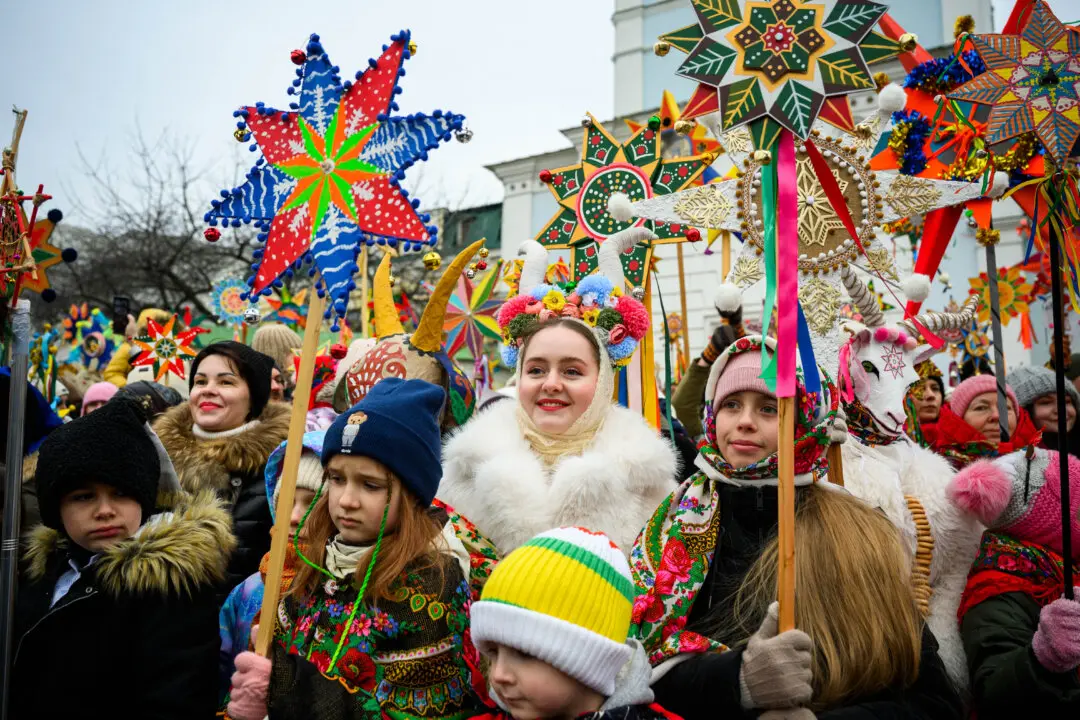When an 80-year-old lady can lift 15-pound dumbbells, do push-ups, squats, planks, and lunges, walk fast, and move around objects quickly, you know she’s aging pretty gracefully.
Jason Greenspan, owner of Silver Stars Fitness, a Manhattan gym only for seniors, has a few clients like these. Greenspan has been working with older adults for over 20 years. Epoch Times asked him for insight on what it takes to get fit when you’re over 60.
Epoch Times: What misconceptions do older adults have about exercising?
Jason Greenspan: You hear a lot of “I’m too old,” “I can’t improve,” or “It’s too late,” but that’s absolutely untrue. Studies show that you can build muscle, you can build strength, and a lot of other aspects of fitness at any age as long as you are consistent and you challenge yourself. It is actually even more important that you exercise as you age.
Epoch Times: What exercises do you recommend for people over 60?
Mr. Greenspan: We recommend an integrated approach. We work on flexibility and mobility, balance, strength, and something that’s called power, which is your ability to do something fast. We also work on agility, quickness, reaction, and coordination. We put together all these different aspects of fitness into our program to prepare clients for real life.
Epoch Times: How can exercise help prevent a fall?
Mr. Greenspan: For older adults, in order to maintain their mobility and decrease the risk of a fall, the muscles around the foot and the ankle, the hip, and core are the main emphasis.
Power is also important. And flexibility, because if you are very tight, it affects overall movement; then you start to compensate and you are more prone to a fall. Your posture and gait mechanics also go into the plan. If you have poor posture, it changes your center of gravity and you are more prone to falling. All these things combine to help prevent a fall.
Epoch Times: What role does fear play in falling?
Mr. Greenspan: Fear can create a fall. When you are walking down the street and you are scared of falling, you compensate. Your strides become shorter and choppier, you walk slower and more gingerly, and everything tightens up throughout your body to avoid the fall, and you are actually a little bit more prone [to fall] because of the compensation.
Epoch Times: What do seniors learn in your fall-prevention class?
Mr. Greenspan: We instill confidence in them, which helps to take away some of the fear [of falling]. [We] teach them a lot of different techniques: how to fall … how to prevent a fall, what to do if you feel like you are falling forward, [what to do if] you feel like you are falling backward.
We teach them to get comfortable with the floor just in case they fall. It is almost inevitable that for whatever the reason, you might end up on the floor, and you have to know how to get up from the floor.
Epoch Times: How many hours a week should people over 60 exercise to get the maximum benefit?
Mr. Greenspan: In terms of strength training, two to three times a week. In terms of a cardiovascular [exercise] that gets your heart rate up, it depends on whether you are looking for a health benefit or to actually increase your fitness level.
In terms of actually increasing your overall fitness level, anywhere between three and five days a week where you actually get your heart rate up and challenge yourself.
Epoch Times: What do you recommend for seniors who need to lose weight but can’t necessarily do a cardio workout?
Mr. Greenspan: The recumbent bike, which is seen in every gym across America, has back support, so [if someone has] a balance issue or a neurological issue where they can’t stand, it’s a good beginning.
I don’t recommend that that’s where it stops [because] there are quite a [few] disadvantages to just sitting down. When you sit down, your hip flexors get very tight, which could put more strain on your lower back; your core is dormant, your buttocks become dormant.
Just plain walking or marching in place [are other options for weight loss].
You can do a strength training circuit, and move from one exercise to the next and make it a little bit cardiovascular without actually putting a lot of strain on the knee or the hip.
Epoch Times: Do you recommend exercise for seniors who are underweight?
Mr. Greenspan: Absolutely, because the loss of muscle tissue accelerates with each decade, and when you lose muscle mass, you lose strength, you lose your ability to balance, [and] you are more prone to falling.
If [some]one comes in underweight, usually, it is because they have lost a lot of muscle tissue. A combination of proper nutrition and being on a set strength training program is … ultra important.
Epoch Times: What about for those who are overweight?
Mr. Greenspan: The obvious is they should be on some sort of cardiovascular program, and nutrition is really the key. [For] an older adult who is carrying a lot of weight, they have to build muscle tissue; otherwise, their metabolism slows down and it’s very hard to lose the weight. Strength training, whether you want to gain weight or lose weight, it’s the key.
Silver Stars Fitness
646-573-9724
850 7th Ave.
Suite 305
New York, NY 10019






